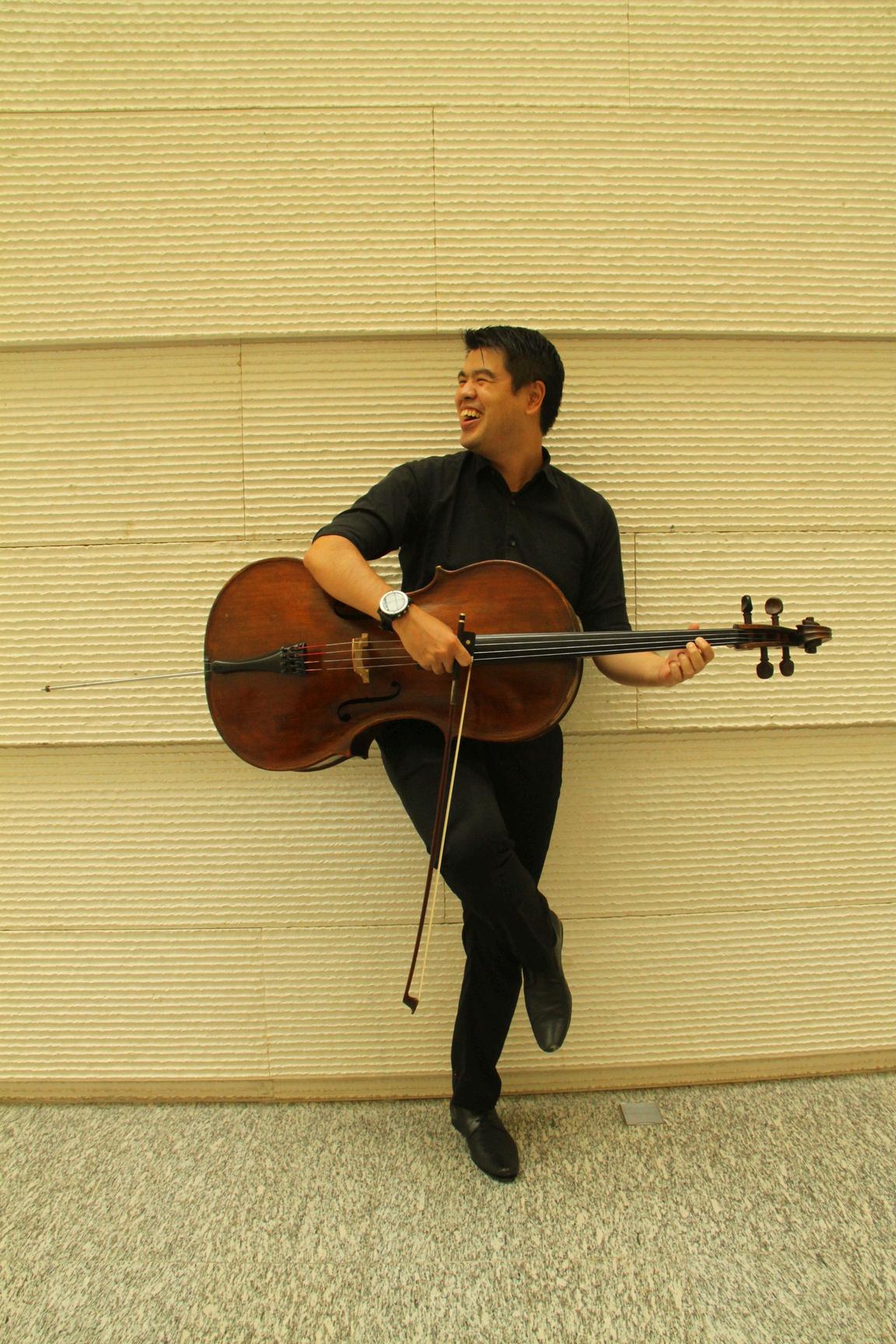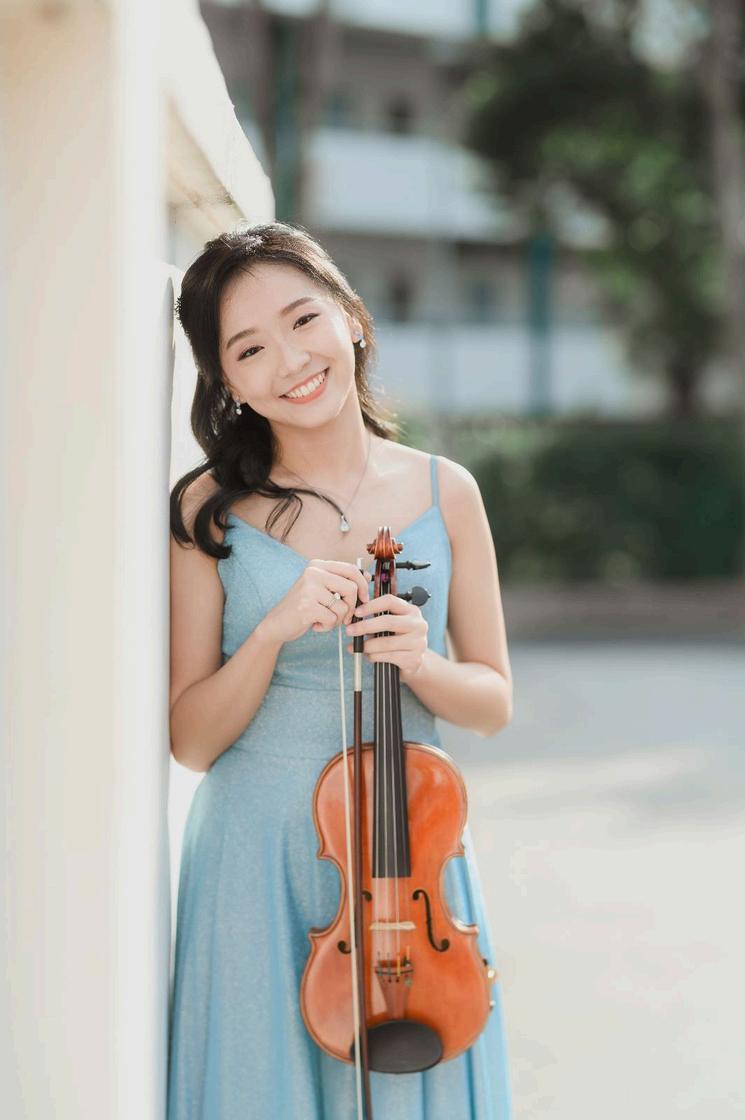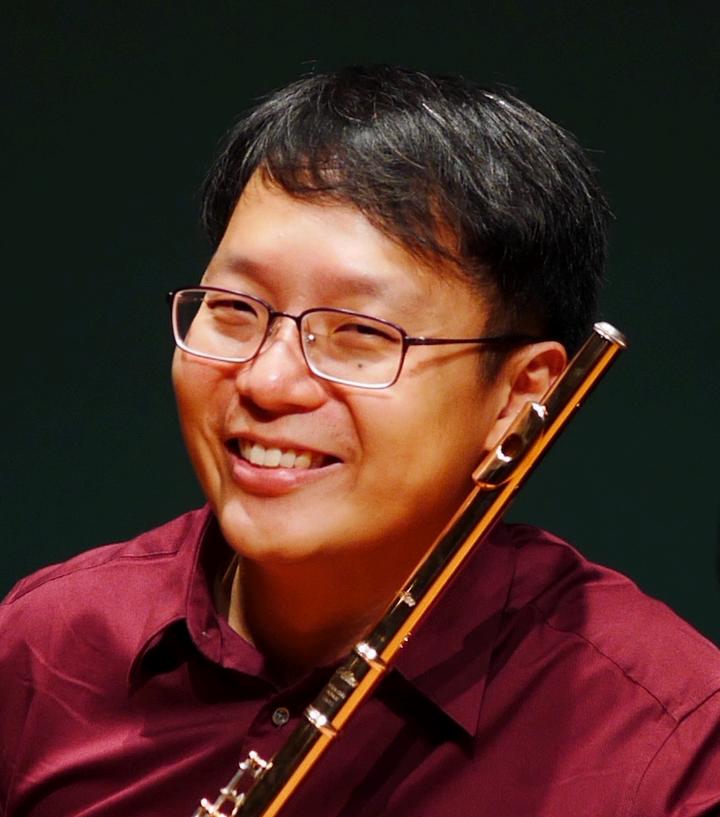Duo Tarenna presents...






Esplanade Recital Studio 24th August 2024 7.30pm
Supported by:












Esplanade Recital Studio 24th August 2024 7.30pm
Supported by:





Duo Tarenna
Tan Tiag Yi (violin/viola)*
Cindy Ow (viola)*
Paul Huang – flute/piccolo
Farah Wu – violin
Chan Sihan – cello
Ding Jian Han Composer/Presenter
*Plays an instrument kindly on loan from the Rin Collection
Composer’s Drawing Board is a new initiative by Duo Tarenna to advocate for contemporary music by not only providing a platform for composers to write new music, but also to connect audiences with the intimate and unique world of a living composer through first-hand experience of their musical inspirations and influences.
As part of this initiative, composers are selected for new commissions via an open call and are invited to curate and present concert programmes in collaboration with the project’s musicians, in order to provide the audience with a context with which to understand the new commissioned works.
Lee Jia Yi (1996 -)
eclipse for violin and viola
Joseph Kosma (1905 - 1969) arr. Tōru Takemitsu (1930 - 1996)
Autumn Leaves for string quartet
Anthony Cheung (1982 -)
The Real Book of Fake Tunes for flute and string quartet
II.
V.
Friedrich Kuhlau (1786 - 1832)
Flute Quintet Op.51 No. 1 in D major
I. Allegro

Astor Piazzolla (1921 - 1992) arr. Tan Tiag Yi (1997 -)
La Muerte del Angel (‘Death of an Angel’) for flute and string quartet
Thomas Adès (1971 -)
Arcadiana for string quartet
IV. Et … (tango mortale)
Ding Jian Han (1994 -)
hreeviFruowT for flute and string quartet


Duo Tarenna is a new ensemble founded in 2020, although its members (Tan Tiag Yi and Cindy Ow) have been playing together since much earlier. At the 2018 Singapore Performers’ Festival, the duo was part of a group that was awarded the highest award of Platinum. In 2022, the duo presented its first two concerts in Singapore (Journey on Eight Strings and parts + pieces), premiering a total of
four new works by four emerging Singaporean composers. In 2023, the duo performed in London (RE:IMAGINE) and Singapore (Silent Moon), exploring the intersections of poetry and music while commissioning three new poems. Going forward, they hope to champion contemporary chamber music through innovative and thoughtful programming, particularly providing opportunities to young composers from Singapore and Asia.
Chan Sihan started playing the cello when he was 8. He learnt under Chan Wei Shing, Herminia Ilano and obtained a Diploma in Music Performance from the Nanyang Academy of Fine Arts under the tutelage of Yu Jing. In 2015, he graduated with a Bachelors of Music with Honors with the Royal College of Music, in collaboration with the Nanyang Academy of Fines Arts, learning under Guo Hao in Singapore, and Alexander Boyarsky in London.
Sihan has played in numerous ensembles and orchestras, including the Metropolitan Festival Orchestra, Singapore Festival Orchestra, Singapore Chinese Orchestra, The Philharmonic Orchestra, Singapore Lyric Opera, Philharmonic Youth Winds ensemble, the Singapore Armed Forces Band, the Chamber Players, and the Singapore National Youth Orchestra, in which he was the associate principal of the cello section in 2006, to name a few.


Sihan is currently a freelance chamber and orchestral musician. Apart from music, he has a passion for diving and is also a certified scuba-diving instructor who yearns for the ocean whenever he has the time.

Farah Wu (b. 1998, Singapore) is a violinist and pianist. She graduated with a Bachelor of Music (Hons) from the Royal College of Music in 2021, where she studied violin under the tutelage of Michal Cwizewicz, Itzhak Rashkovsky and Berent Korfker, and piano under Kathron Sturrock. She has also played in masterclasses under renowned violinists such as Pierre Amoyal, Albert Markov, Krzystof Wegrzyn and Fanny Clamagirand. During her time in the RCM, she received the RCM Musicians’ Grant Fund and was an active chamber musician who explored works by underrepresented underrepresented and contemporary composers.
Prior to her studies in the UK, she learnt the violin under Marietta Ku, and the piano under Timothy Ku, Paul Liang and Alice Ng. She has played in numerous local orchestras, such as the Orchestra of Music Makers, Musicians’ Initiative and Asian Cultural Symphony Orchestra, and was the concertmistress of the Raffles Chamber Ensemble in 2016. Since her return from the UK, she has been an active violin and piano teacher and accompanist, as well as a conductor for the Nanyang Primary String Ensemble (Junior). She also attained Second Prize in the Violin Classical Senior Category of the Happy Music Festival 2021, and was one of the violin judges in the 2022 rendition. She is currently undergoing the Master of Music programme at University of Illinois under the tutelage of Dr. Salley Koo. Farah is passionate about music education for the underprivileged and shining a light on underperformed works. Some of her other interests include E-sports, strategy gaming and Dungeons & Dragons.

Paul Huang is an accomplished flautist and music educator with extensive experience in both fields. He began his music career as a professional flute player in the Singapore Armed Forces Central Band. He has taught in various settings, including large ensembles like orchestras, wind bands, and choirs, as well as individual music theory and flute lessons. More recently, Paul has expanded his expertise by lecturing on performance psychology

and musician's health and well-being at the Nanyang Academy of Fine Arts.
Paul received his Bachelor of Music in flute performance from the Royal College of Music (RCM) and NAFA in 2015 and subsequently won 2nd prize in the open category of the Singapore Flute Festival in 2016. Driven by his passion for scientific research in music, Paul pursued postgraduate studies in Performance Science at the RCM. He has trained in performance psychology and cognitive behavioural therapy, and aims to help musicians perform better by going beyond traditional music education.


Ding Jian Han (b. 1994) is a composer, music arranger and music educator from Singapore. His current compositional style draws inspiration from his varied non-musical interests and he uses these non-musical ideas and concepts to formulate new sounds and textures in his music. He is strongly influenced by video and the visual medium and enjoys incorporating acoustic models in his works. His music has been performed in Singapore, Germany, China, Taiwan, Korea, Malaysia, Vietnam, Indonesia, and New Zealand. In 2019, Jian Han was awarded the 3rd Prize of the Asian Composers League (ACL) Young Composers Competition. In 2021, He was awarded the First Prize and the Young Singaporean Composer award in the Ding Yi Music Company 4th Singapore International Composition Competition for Chinese Chamber Music (Category B2). Jian Han is currently Composer-in-residence of a new music ensemble based in Germany, Ensemble INprogRES, and teaches music at Raffles Institution in Singapore. He has also given guest lectures at the Nanyang Academy of Fine Arts (NAFA) and the Yong Siew Toh Conservatory of Music (YSTCM), under the invitation of Dr Goh Toh Chai Zechariah and Dr Peter Ivan Edwards respectively. His principal tutors in composition include Dr Peter Ivan Edwards, Mr Martin Jaggi and Dr Oliver Schneller.
Lee Jia Yi

eclipse explores the idea of sounds interweaving and intertwining as well as the gradation of sound from dark to light. Inspired by Singaporean artist Eng Tow’s cloth relief of the same title, this piece treats the violin and viola duo as an 8-string “meta-instrument”, traversing different textures and timbres together.
Commissioned by Duo Tarenna
Programme note by Lee Jia Yi
The programme note of eclipse is reproduced here with the kind permission of Lee Jia Yi.
Copyright © Lee Jia Yi 2022
To learn more about the artwork Eclipse, please click on this link

Any seasoned jazz listener is sure to recognize the popular tune Autumn Leaves; Ahmad Jamal, Bill Evans, and John Coltrane, amongst many other musicians, have recorded their version of this beloved tune, landing it as the eight most recorded tune in history. It may come to the surprise of many, then, that the origins of Autumn Leaves is in fact, French.
Joseph Kosma, a Hungarian composer who emigrated to France in 1933, collaborated with French lyricist Jacques Prévert to write the song Les Feuilles mortes in 1945. Kosma borrowed much from his previous ballet music written for Roland Petit’s production, Le Rendez-vous. The original French lyrics are somewhat wistful, painting the image of faded memories of a loved one lost, through the passage of time. The song was later featured in Marcel Carné’s film, Les porters de la nuit (Gates of the night) Soon, American lyricist Johnny Mercer wrote English lyrics for the tune in 1950, renaming the title to Autumn Leaves. The English version did not gain popularity till pianist Roger Williams recorded his arrangement of the tune, which became a number-one hit in the United States in 1955. Autumn Leaves soon transitioned from being a number-one song into a highly popular jazz standard.
Tonight, you will be hearing a string quartet arrangement of the tune written by Japanese composer Tōru Takemitsu. This rendition of Autumn Leaves had its first performance in 1993 at the Yatsugatake Kogen Music Festival. Towards the end of his life, Takemitsu took an interest in the autumnal; his last pieces included the viola concerto A String Around Autumn, Ceremonial: An Autumn Ode for shō and orchestra, and this arrangement. The washes of sound, distinctive to Takemitsu’s idiomatic style, bring new life to the celebrated standard, while keeping the famous tune unmistakable.
Programme note by Cindy Ow

Anthony Cheung
The five movements of this work are, of course, no more “tunes” in the traditional definition of the word than fake book lead sheets are substitutes for songs in all their multiple dimensions of performance history and interpretative open-endedness. The somewhat tongue-in-cheek title - with a reference to the infamous “Real Book” that has served as a gateway anthology and/or gig enabler for so many aspiring jazz musicians since the 70s - belies a formal architecture of five movements with distinctive characteristics, and with an instrumentation that has been around since the 18th Century but has still not found a serious following. The different character traits between and consistency within each movement, as well as the relatively equal durations, give the feeling of a suite. Parallels could be drawn to different genre types: a floating, weightless introduction that turns capricious, a somewhat sorrowful ballad with interruptions, a semi-serious scherzo that swells and subsides in wave-like motions, a resonance study that turns into a free-flowing, improvisatory rhapsody. And in the finale, the closest one gets to a “tune” in the familiar sense, with repeated and expanding yet irregularly timed chord progressions that might remind some of John Coltrane’s “Countdown.” Throughout, the interplay between the flutes and quartet is one that is ever-shifting, with roles that alternate between soloist/accompaniment and fully integrated and equal. The dynamic personalities of Claire Chase and the members of the Spektral Quartet were never far from my thoughts when composing this piece, and I am grateful to them for giving me the chance to stretch in whatever ways suitable to the whimsical moment.
Anthony Cheung March 2016
The programme note of The Real Book of Fake Tunes is reproduced here with the kind permission of Anthony Cheung.
Copyright © Anthony Cheung 2016
*Only movements II and V of this work will be performed for tonight’s concert.

Friedrich Kuhlau
Friedrich Kuhlau (1786-1832) was a pianist and composer who was born in Germany and settled later in Denmark. He wrote a large body of wellregarded music for the flute in his lifetime, which earned him the sobriquet ‘Beethoven of the flute’ among his contemporaries. This comparison perhaps had some degree of accuracy, as Kuhlau himself greatly admired Beethoven and promoted Beethoven’s music extensively in Denmark. He also visited Beethoven personally on a number of occasions.
Kuhlau’s three flute quintets of his Op.51 set were written in 1822 and scored for the relatively uncommon instrumentation of flute, violin, two violas and cello. The first movement of Op.51 No.1 bubbles with charm in its melodic tunefulness, which is enlivened through the spirited exchange of motivic material between instruments of the quintet throughout. While the structure of the movement broadly conforms to conventions of the late 18th century (in this case sonata form), Kuhlau expanded each section of the form much in the manner of his contemporaries, including Beethoven. In this work, phrases of music are constantly subject to reinterpretation in terms of their structural function as the music progresses, a process that musicologist Janet Schmalfeldt has poetically termed as ‘becoming’. This process can be likened to a journey through a landscape, where features of the landscape change in form and significance based on the perspective that they are viewed from.
The thematic material of the movement is hence constantly in transition through the interplay of rhetoric and harmonic structure. To draw an analogy, the musical material transforms in the piece as in a journey through a landscape, where objects recede and emerge based on the changing position which one is at.
Programme note by Tan Tiag Yi

Astor Piazzolla arr. Tan Tiag Yi
La Muerte del Angel was composed by Astor Piazzolla in 1962 at the request of playwright Alberto Rodriguez Muñoz for the production of his play Tango del ángel, alongside two other works Introducción al ángel, and Milonga del ángel. Tango del ángel tells the story of an angel who seeks to heal the souls of the residents of a Buenos Aires neighbourhood. La Muerte was initially conceived to accompany the pivotal moment at the end of Muñoz’s play where the angel protagonist is killed in a knife fight. The fierce back-and-forth of the fight is perhaps reflected musically in the fugato opening, whose material later reappears as the theme of an explosive tango. The slow middle section of the work provides some reprieve from the exertions of the first section, though danger is never far away, as the initial material is reprised, leading to an abrupt, deadly close.
Programme note by Tan Tiag Yi
Thomas Adès
I. Venezia notturno
II. Das klinget so herrlich, das klinget so schon
III. Auf dem Wasser zu singen
IV. Et… (tango mortale)
V. L’Embarquement
VI. O Albion
VII. Lethe

Six of the seven titles which comprise Arcadiana evoke various vanished or vanishing ‘idylls’. The odd-numbered movements are all aquatic, and would splice if played consecutively. I might be the ballad of some lugubrious gondolier; III takes a title and a figuration from a Schubert Lied; in V a ship is seen swirling away to L’Isle Joyeuse; VII is the River of Oblivion.
The second and sixth movements inhabit pastoral Arcadias, respectively: Mozart’s ‘Kingdom of Night’, and more local fields. The joker in this pack is the fourth movement, the literal dead centre: Poussin’s tomb bearing the inscription Even in Arcady am I.
Arcadiana was commissioned by the Endellion Quartet with funds from the Holst Foundation.
© 1994 Faber Music Ltd
Reproduced by kind permission of the publishers.
*Only movement IV of this work will be performed for tonight’s concert.
Ding Jian Han

So what on earth is ‘hreeviFruowT’? That is probably the first thing you wonder as you look at this title during the concert which you are currently at. Fair question I must say, considering how absolutely normal the title is. Could it be some kind of code? Is it a made-up language? Could it be that the composer was not able to think of a title at the submission deadline and used a random word generator to create it?
Fortunately, no. To understand the meaning behind this title, we have to shift our attention to the artwork titled Metamorphosis II by the Dutch artist M.C. Escher. In this woodcut print, we notice a myriad of different transformations. Some of these transformations are a subtle play on shape, some gradually morph into a completely different object, some seem to degrade or decay, some are re-contextualisations of our perspective, some are shifts in the degree of density... and many more. I was fascinated by this artwork and was motivated to compose a piece which explores the different ways music, or musical material, can transform.
If we take a closer look at the title ‘hreeviFruowT’ once again, we might be to see 4 smaller words, albeit not in their regular form. There is ‘eviF’ which is ‘Five’ spelt backwards. This is followed by ‘Fruo’, which is a jumbled up spelling of ‘Four’. Next, ‘owT’ is once again a backward spelling, this time of the word ‘Two’. Finally, the last letter of the title is spelt with a capital ’T’, which is a little strange, but also symbolises the title being ‘unending’ and in a perpetual loop, like the structure of Metamorphosis II, connecting back to the beginning ‘hree’ to form the word ‘Three’.

So why these numbers ‘Two’, ‘Three’, ‘Four’, ‘Five’? These 4 numbers form the entire backbone of musical material in the work, with almost every rhythmic cell, groupings and permutation of notes relating to one or more of these numbers. The length of transformations of the musical materials similarly follow certain calculations based on multiples of 2, 3, 4 and/or 5. The structure of the piece is not directly related to the structure of Metamorphosis II but uses the types of visual transformation as inspiration for the transformation of musical material.
Programme note by Ding Jian Han
The programme note of hreeviFruowT is reproduced here with the kind permission of Ding Jian Han.
Copyright © Ding Jian Han 2024
To learn more about the artwork Metamorphosis II, please click on this link.
Please fill in our post concert survey so that we can improve our future concerts!
This concert would not have been possible without the following individuals and organisations: Acknowledgements
Esplanade and its production team, Our front of house volunteers Wu Woon Yann and Grace Tan, Our presenter and commissioned composer Ding Jian Han, Our videographer Cheryl Toh, Our stage manager Wu Chin Ying, Our recording engineer Ben Tay, Our distinguished external selection panellists Dr. Eugene Birman and Leslie Tan, Our social media/ marketing manager Dion Ow, National Arts Council and Tote Board Arts Fund for their generous funding support, Dr. Chang Tou Liang for reviewing our concert, and you for coming!